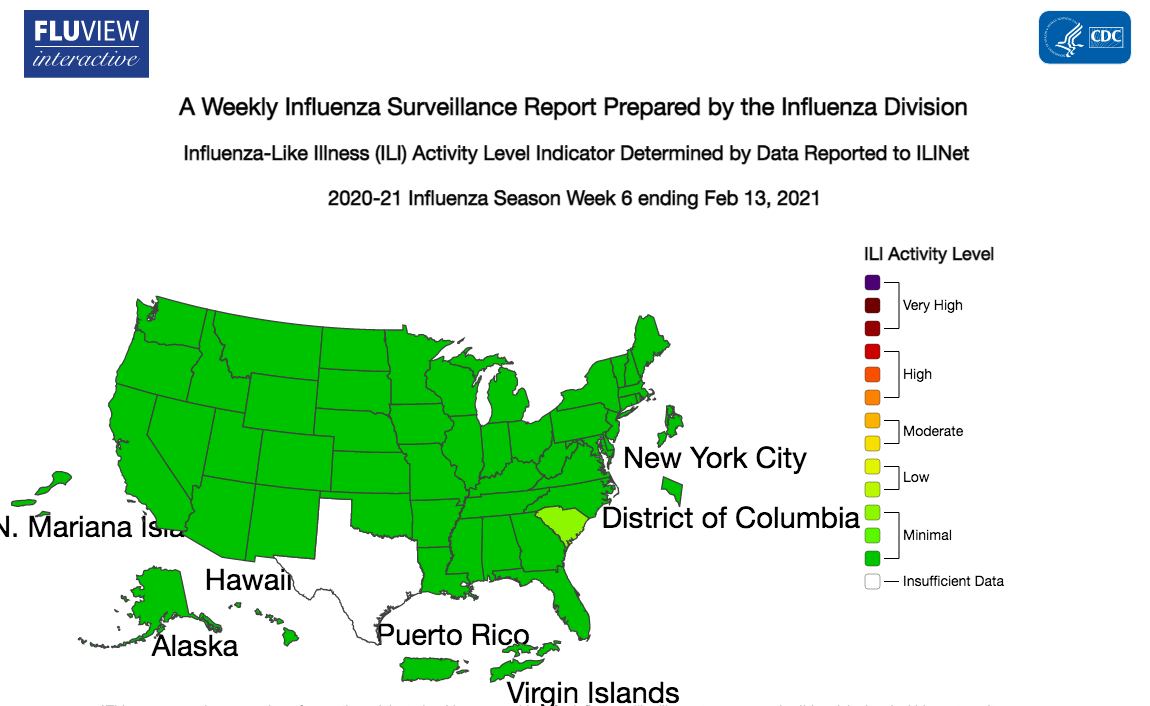This winter has been a complete nightmare for Americans, thanks to the raging covid-19 pandemic. But new data from the U.S. Centres for Disease Control and Prevention continues to show one bright spot: The flu has been suppressed to some of the lowest levels on record. It’s likely that the interventions meant to slow the spread of covid-19, like avoiding gatherings and mask-wearing, have helped stop the less-contagious flu in its tracks, and more people than usual got the flu vaccine.
According to the CDC, the country’s current level of flu-related hospitalisations is lower than it’s been during a flu season since 2005, when the country began routinely collecting this kind of data. All 50 U.S. states are experiencing minimal activity right now, in what might be normally be the tail end of the peak period for flu, and the overall flu season has been peaceful from start to end. The cumulative hospitalisation rate is even lower than it was for the 2011-2012 flu season, the lowest-intensity season seen in the past decade. And perhaps most importantly, only a single pediatric flu death has been reported this winter. Contrast that with the brutal, record-setting 2017-2018 flu season, when nearly 200 children died.

The numbers, while great news, are a bit unexpected. Last autumn in the country, many scientists were genuinely worried about the possibility of a “twindemic” of flu and covid-19. Covid-19 has certainly held up its end of the bargain, with more deaths and hospitalizations this winter than any other point of the pandemic. Yet there had been evidence in other countries that experienced the flu earlier in the year this season would be mild, for very understandable reasons.
Though both the flu and covid-19 are caused by viruses that spread through the respiratory system via infectious aerosols and droplets, for instance, the coronavirus is more contagious than the garden-variety influenza virus. So interventions that lower a person’s chance of spreading covid-19, like frequent hand washing, mask-wearing, or just keeping a distance, are likely even more effective for the flu. This could be especially important when it comes to schools, since children are often drivers of flu outbreaks in normal times. Vaccination, too, is probably playing a role. Early data has suggested that vaccine uptake is higher than in recent years, and higher rates have been credited for other countries’ success in keeping flu levels low.
Flu isn’t the only disease that’s been suppressed thanks to pandemic-related measures. Last summer, an expected surge in children who develop a polio-like paralysis never came to pass, since infection rates of the common cold virus that can cause it declined around the same time. Other common diseases, like norovirus, have also taken a dip in the past year.
Of course, trying to stay safe during the pandemic hasn’t come without its social and mental costs. And the lull in these seasonal diseases could mean that we’ll see spikes of these illnesses once people go back to their normal routines. But there’s a lesson for future flu seasons: Maybe we can’t ever eradicate flu, but a little more hand-washing, vaccinating, and staying home when sick — or wearing a mask when you’re sick and must go out — should undoubtedly make it less of a seasonal threat.
